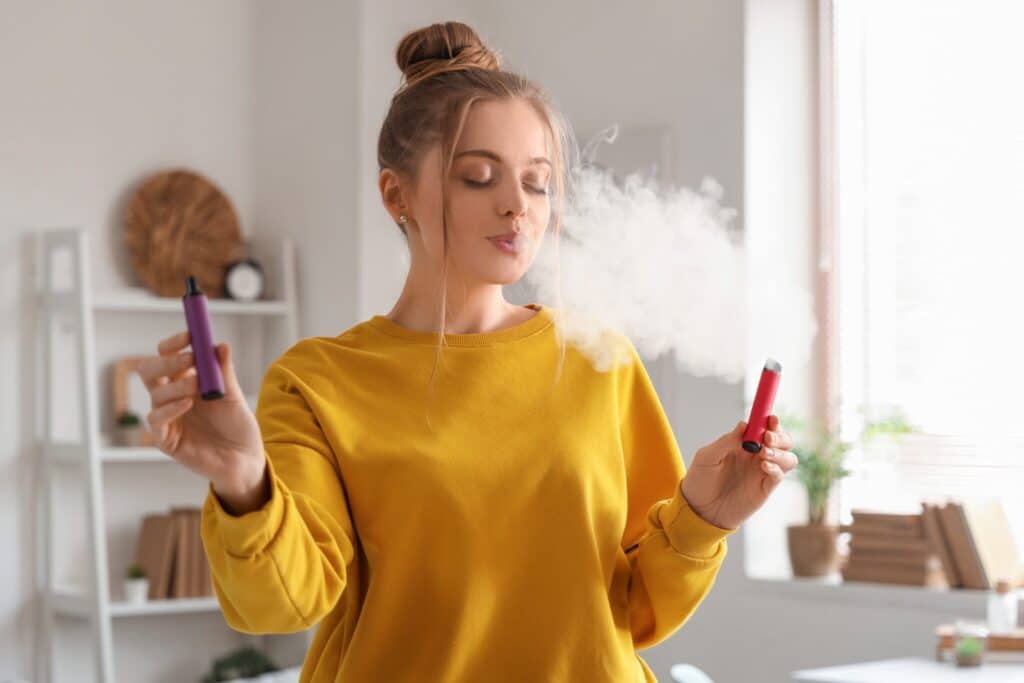What began as a hopeful step toward better health became a life-altering nightmare for 39-year-old Loyda Cordero Faliero, a mother from Franklinville, New York. Like many who’ve tried to break free from cigarettes, she turned to vaping—believing it to be a safer, smarter alternative. But within just two years, her decision would lead her to a hospital emergency room, gasping for air and facing a diagnosis she never saw coming.
“I was proud of myself for quitting cigarettes,” Faliero said in a recent interview. “I thought vaping would be the safer option.”
After smoking for over two decades, she had done what so many health professionals encourage—she gave up tobacco. But instead of regaining control of her health, she fell into a deeper and more dangerous spiral. What she assumed was harmless vapor turned out to be a toxic cocktail her body couldn’t handle. And one day, it all came crashing down—literally. Faliero’s lung collapsed.
Doctors diagnosed her with bullous emphysema, a chronic and irreversible form of COPD (chronic obstructive pulmonary disease). Her lungs, they found, were riddled with large air pockets—pulmonary bullae—that had formed in response to inflammation and fluid buildup. One of those pockets had burst.
“My lung collapsed because it was building up with the liquid from my vape,” she recalled. “One of the pulmonary bullae ended up bursting and that could’ve killed me instantly.”
Since then, nothing has been the same.
Once an active mom, Faliero now finds herself unable to perform even the simplest household tasks. She can no longer lie flat to sleep—instead, she spends her nights upright in a recliner, terrified that lying down could lead to choking in her sleep.
“If I lie flat, I could choke to death on my own spit,” she said. “I can’t even stand up to make dinner without ending up in tears from the pain.”
Every breath is now a battle. Cooking, washing dishes, even lifting a gallon of milk—each movement drains her. And yet, the emotional toll is just as steep as the physical one. The betrayal of thinking she’d made a healthy change, only to find herself more fragile than ever, weighs heavily.
Doctors believe the condition was largely triggered by vaping, not the years of smoking she’d left behind. She had transitioned fully to e-cigarettes, vaping almost constantly. What was meant to be a temporary step toward better health became a round-the-clock habit, one she admits spun out of control.
“It really has taken over my life more than I ever thought it would,” she said. “I quit something thinking it was going to be healthier, but it destroyed me.”
Vaping has long been touted as a cleaner, safer alternative to smoking—a message marketed to millions. But growing research is beginning to show that this perception may be dangerously misleading. Inhalation of heated chemicals, flavorings, and aerosols can irritate and inflame the lungs, potentially leading to serious damage. And while cases like Faliero’s might be rare, they are no longer outliers.
“I want people to understand, this isn’t just water vapor,” she said. “If I had kept vaping, I’d be on life support in five years. That’s how much damage it’s done.”
Despite the grim reality she now lives with, Faliero is speaking out—not out of bitterness, but out of hope. She wants her story to serve as a warning, especially for others who may be considering vaping as a so-called “healthier” option.
“Basically, I’m on my deathbed,” she said plainly. “This is a ticking time bomb, and I want people to know the truth before it’s too late.”
Loyda’s message is one born not of fear, but of hard-earned clarity. Sometimes, the search for better health leads us down roads we never meant to walk. Her story urges others to pause, to ask questions, and to recognize that not all replacements are truly improvements—especially when it comes to what we put in our lungs.






